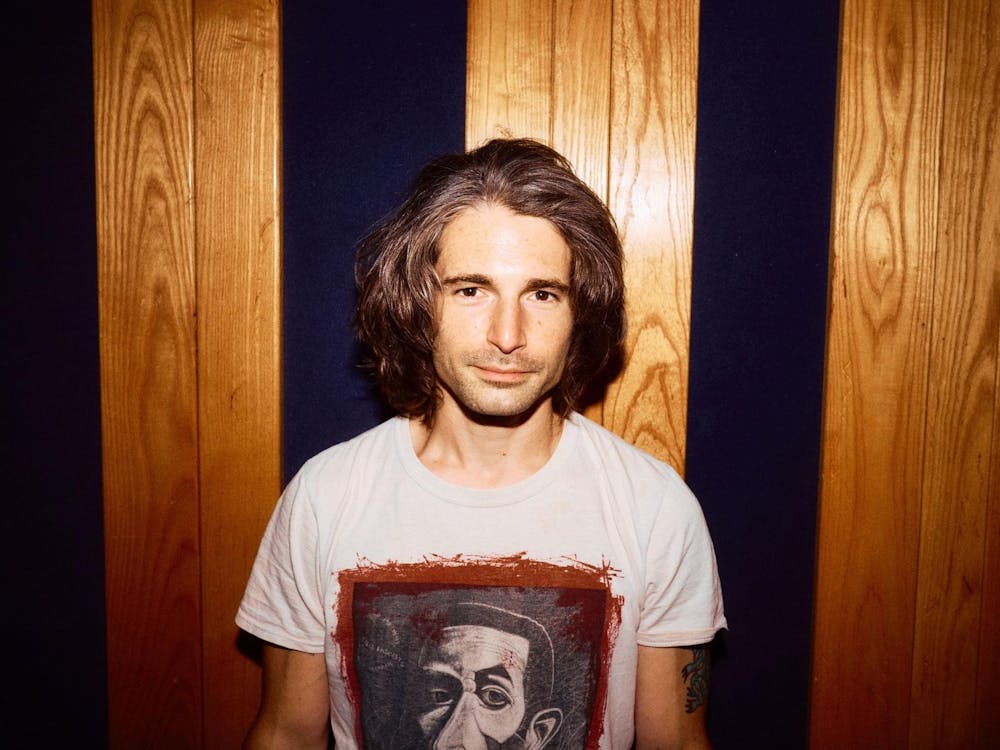“You think poop is funny?” asks a detective Carla Dickey (Bellina Logan) in the first episode of season two of Netflix’s “American Vandal.” The show’s first season, which aired last year, received widespread acclaim. Not only is the first season an inch-perfect spoof of trendy true-crime documentaries, but it also presented the most hilarious, honest and realistic portrayal of life as a 21st-century high-schooler to date. The second season runs back the premise, introducing an even more ridiculous crime than the first. Instead of searching for the person who spray-painted penises on dozens of cars, high-school documentarians Peter (Tyler Alvarez) and Sam (Griffin Gluck) must figure out who slipped laxatives into the school lunch lemonade at St. Bernardine High School, sparking an event called “The Brownout.” This is why a professional detective finds herself so indignantly asking about poop.
The second season isn’t as laugh-out-loud funny as the first. The largest loss is Jimmy Tatro, who starred as accused prankster Dylan Maxwell in the show’s first run. No character in season two matches Tatro’s brilliant, deadpan gravitas. Nor can anyone involved in “The Brownout” compare with Alex Trimboli (Calum Worthy), the first season’s greasy-faced snitch. Still, season two has its moments. After all, as Sam quips in episode three, “poop is funny.”
“American Vandal” didn’t become a breakout hit because it had really good dick jokes, though. The show became famous because it attacked modern teenage life with the same meticulous eye for detail that its protagonists applied to the show’s spray-painted penises. The second season, like the first, gets the little things right. One plotline centers around a specific, well-known iPhone glitch. Another smartly analyses the difference between the smile emoji and the grimace emoji. Kevin (Travis Tope), the school’s resident oddball, brags about being an atheist and enjoys discussing “Rick and Morty.” The high schoolers in “American Vandal” talk and act like real high schoolers.
For much of the season, the perpetrator of “The Brownout” hides behind an anonymous Instagram account. Dubbed “the Turd Burglar,” the Instagram brags about the mayhem the well-placed laxatives caused. In an effort to uncover the truth, Sam and Peter take a deep dive into the social media of the students at St. Bernardine. It’s here that the show really hits its stride. “American Vandal” is a show about spray-painted penises and their accompanying ball hairs, and it’s a show about kids in Catholic school uniforms violently relieving themselves in the hallway — but more than anything else, it’s a show about social media.
The last few years have seen an upswell in television and movies that deal directly with the cultural ramifications of technology. Netflix’s “Black Mirror” has been crafting technology-based dystopias for four seasons. Last week saw the release of “Searching,” a thriller told almost entirely through the laptop screen of the protagonist. It’s becoming clearer every day that art’s next great challenge is helping people understand the powerful devices that have become so embedded in modern life. “American Vandal” tackles this challenge better than just about any show that’s come out in the last few years.
“American Vandal” flawlessly portrays the social media landscape in which young people live. Because of its attention to detail, the show is able to reach complex conclusions about the impacts of this technology. “American Vandal” refuses to sink into the simple “phones = bad” dichotomy that “Black Mirror” and shows of its ilk often stumble into. Instead, “Vandal” understands that phones and social media, more than creating new problems, are simply reframing questions that teenagers have always had: Who am I? Who do I want to be? How do I express myself? These are the same questions that haunted the kids in “The Breakfast Club” and “Freaks and Geeks” — now, they’re being pondered online. As Peter says in the show’s closing monologue, “We’re not the worst generation. We’re just the most exposed.”
Drawing this connection is the show’s greatest success. Both seasons of “American Vandal” have earned the highest compliment that can be bestowed upon television about high schoolers — simply put, “American Vandal” feels like a show written by young people.







